For untold centuries, the annals of Western Civilization have repeatedly described the fascination that China and “the Orient”[1] have held for explorers, historians, poets, writers, and (to a lesser extent) the average person. It is true that contact and trade between Asia and Europe began (in small measure) in the 3rd century B.C.[2] However, significant mutual awareness and exchanges of trade and culture did not begin in earnest until the military genius, Genghis Khan, extended Asian influence into what is now Russia, significant portions of Eastern Europe, and the Middle East in the 13th Century.
However, one of the most historically powerful “shapers” of Western thought about China was another 13th Century figure – an Italian from Venice named Marco Polo. At the age of just 17, Polo embarked on an epic journey to and through China (see map). It was Polo’s extensive written record[3] of that fascinating journey lasting nearly quarter of a century that sparked the imagination of European leaders and citizens and produced the first wave of widespread perceptions regarding “China”, “the Orient”, “the East”, etc.[4]
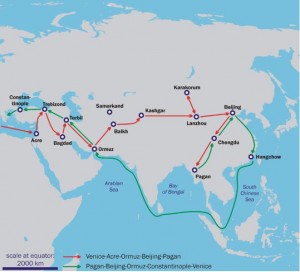 Marco Polo Journey: The map to the left is based on a reconstruction by historians of the path(s) taken by Polo during his China region travels.
Marco Polo Journey: The map to the left is based on a reconstruction by historians of the path(s) taken by Polo during his China region travels.
Over the centuries, various trade routes were developed that linked European markets with Chinese markets – as well as Chinese markets with Indian, Persian, and Arabian markets. These links between “East” and “West” (and points in between) are most often referred to as the “Silk Road” – and an image appears below that helps you to visualize those paths of connection. Note in particular that the land route appears in red – obviously the initial routes of trade. In the mid-15th Century, the Ottomans conquered Constantinople – an event that cut off easy access by land routes for many decades and led to the development and growth of Silk Road sea routes – appearing in blue.
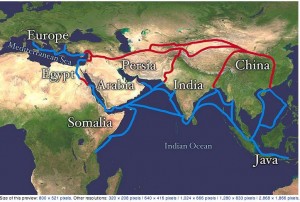 Finally, as everyone educated in U.S. public schools knows, the “Age of Discovery” fostered an intense period of long, ambitious sea exploration by such famous maritime figures as Christopher Columbus, John Cook, Ferdinand Magellan, Ponce de Leon, and (my personal favorite explorer name) Vasco da Gama – most of them searching for shortcuts via the western seas to the eastern markets of China, India, etc.[5]
Finally, as everyone educated in U.S. public schools knows, the “Age of Discovery” fostered an intense period of long, ambitious sea exploration by such famous maritime figures as Christopher Columbus, John Cook, Ferdinand Magellan, Ponce de Leon, and (my personal favorite explorer name) Vasco da Gama – most of them searching for shortcuts via the western seas to the eastern markets of China, India, etc.[5]
Each of the historical episodes above, when combined collectively, contributed to the mystery and conundrum that was China and “the East”.
Today, of course, the most frequent references to China come from financial and business news reports (both print and broadcast/video). If one has a great interest in keeping up with China, there is a nearly unlimited supply of stories available in newspapers or magazines, as well as through cable TV and the Web! That should not be a surprise to anyone, since what is now the world’s second largest economy has produced an enviable record of economic growth. Take a good long look at the growth graph below (covering the twenty years that ended December 31, 2012):[6]
As you review the graph above, ask yourself this question: “When was the last time the U.S. experienced 14% growth in one year?”
As we know, Western economies would currently be ecstatic with growth in the 3-5% range. However (by way of delineating the power of expectations) If China were to suddenly slow up to that same annual rate, the news would send shock waves throughout Wall Street[7], lead to an asset and price collapse within Chinese stocks and ETFs, and would wreak devastating effects upon emerging market equities and the stock of any company that has substantial business interests in China.
To put it bluntly, China has burgeoned into an economic engine that (daily) exerts its influence throughout the world. Of course, there are far more reasons for that being true than I can possibly hope to lay out for you here. But I can touch on a few of the highlights:
1) FOREIGN RESERVES: Combine a strong export-oriented economy with disciplined financial management (at both a national and personal level) and the result has been China’s current overwhelming dominance among nations with regard to currency reserves. This very recent chart shows the countries with the top five totals of reserves – the only ones with a reserve total exceeding at least 500 billion dollars.[8]
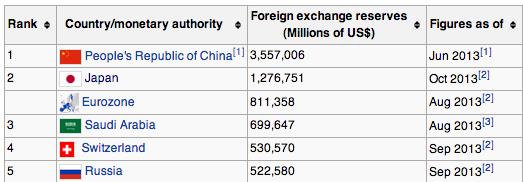 Notice that China’s Reserves nearly triple those of Japan. Not surprisingly, the rate of growth within China’s Reserves has been high (see the graph of three-month average growth below):[9]
Notice that China’s Reserves nearly triple those of Japan. Not surprisingly, the rate of growth within China’s Reserves has been high (see the graph of three-month average growth below):[9]
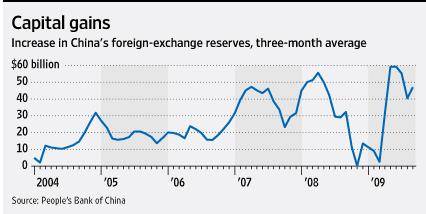 Of course, as the Beatles famously taught us in song, money “Can’t Buy Me Love”. However, money most assuredly can buy us plenty of influence. And guess how China can influence other countries? Yes, you’ve got it: investment!
Of course, as the Beatles famously taught us in song, money “Can’t Buy Me Love”. However, money most assuredly can buy us plenty of influence. And guess how China can influence other countries? Yes, you’ve got it: investment!
2) A HUGE PORTFOLIO OF ASSETS INVESTED ABROAD: The Chinese investment we hear about most often is U.S. Treasury Securities – of which China owns $1.3 trillion! Japan is second at $1.1 trillion. The chart below dramatically illustrates how Asia dominants the list of foreigners to whom the U.S. “is beholden”.
The Foreign Debt Chart is as of July 2013 (to the right — see source in Footnote).[10]
In light of the magnitude of this dependence upon Chinese “capital”, I thought it was absolutely fitting to share a political/economic cartoon I ran across while doing my research… one that creatively ties Chinese history (the “Great Wall”) with modern day economics:[11]
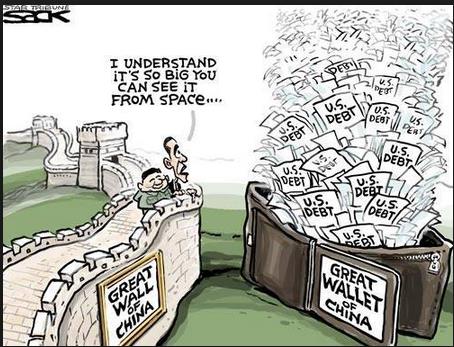 3) GROWING MIDDLE CLASS AND URBANIZATION: The inexorable growth of the Chinese economy, and the steady accumulation of national wealth have resulted in the emergence of two obvious and powerful trends in China – growth in domestic consumption[12] and growth in migration from the country to cities (the two are largely intertwined).
3) GROWING MIDDLE CLASS AND URBANIZATION: The inexorable growth of the Chinese economy, and the steady accumulation of national wealth have resulted in the emergence of two obvious and powerful trends in China – growth in domestic consumption[12] and growth in migration from the country to cities (the two are largely intertwined).
The primary “point” of the two charts below is that, despite the rapid growth of domestic consumption and urbanization in China – China remains so far “behind” the developed world in these categories that the slope of growth will be impressively steep in the years ahead![13]
Another (related) trend that has been manifesting itself in China is increasing access to (and spending upon) Health Care (see the graph below[14]). As you can see, China is almost at the bottom of the rankings among nations with regard to “Health Expenditures per Capita”. Once again, the presumption is that, as the Chinese economy continues to prosper, the slope of growth in health-related spending will be startling.
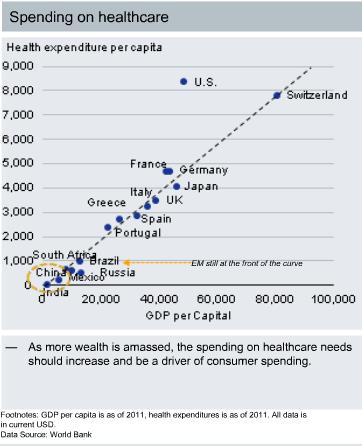 4) CHINA OFFERS UNMATCHED “PEOPLE POWER: AND “ECONOMIC SCALE”: Not only is China the world’s most populated nation (1.351 billion people) but the economy (as suggested above) is dynamically growing at rates difficult for us to comprehend. Consider some of these metrics of growth during the past 12 years:
4) CHINA OFFERS UNMATCHED “PEOPLE POWER: AND “ECONOMIC SCALE”: Not only is China the world’s most populated nation (1.351 billion people) but the economy (as suggested above) is dynamically growing at rates difficult for us to comprehend. Consider some of these metrics of growth during the past 12 years:
a) Percentage of folks with access to sanitation facilities has jumped by over 44%;
b) health expenses per person has increased 541%;
c) poverty “headcount ratio” has declined 57%;
d) mobile cell phone subscriptions have jumped over 1109%;
e) International tourism has moved up by 84.4%;
f) the Gross National Income (GNI) per Capita has increased by 568%.
Is it any wonder why so many U.S. corporations see (or hope for) steadily rising streams of revenue from sales in China?[15]
So let me ask you now, do you find “the China Story” compelling from an economic and investment perspective? I suspect that, were we all gathered in one room and asked to respond to this question by a “show of hands”, about 35-45% the room would say “Yes” and about 25-35% would respond “No”, with the rest saying either “Uncertain” or “It depends”!
Let’s see how “the Market” answered this question during the first ten months of 2013. The biggest, broadest Chinese equity ETF is the iShares FTSE/Xinhua China 25 Index. I am sorry to say that the price action in FXI through October has been (to put it mildly) less than scintillating!
Between January 1st of this year and October 25th, (FXI) (in blue) decreased by almost 13%, while the S&P 500 Index (in red) zoomed upward by about 20%! (See the graph below.)
But friends, don’t we (in the U.S.) have an economy in the doldrums, with over 7% in official unemployment[16] and the highest number of persons ever qualifying for food stamps and other forms of public assistance? What is going on here? This doesn’t seem to make sense.
The simple answer is “Chairman Ben” has flooded the United States (and the world) with U.S. dollars! Those dollars have needed to find a “home” somewhere – thereby driving up asset prices (as Chairman Ben intended!). However, the real answer is quite a bit more complex. I can’t possibly hit upon all of the main themes, but let me at least touch on some “highlights” regarding factors that exert a drag upon Chinese equity performance.
1) THE HEAVY “HAND” OF GOVERNMENT: The People’s Republic of China (as it is officially named) has come a long, long way from the days of its tightly controlled and managed centrally run economy[17]. However, no discerning person could truly confuse the Chinese economy with “free enterprise”:
a. Many key companies are still State Owned Enterprises (SOEs); In case you need to be convinced on this point, here is a graph of the share of Chinese GDP accounted for through Chinese SOEs vs the share of GDP produced through SOEs in other Developing Market countries.
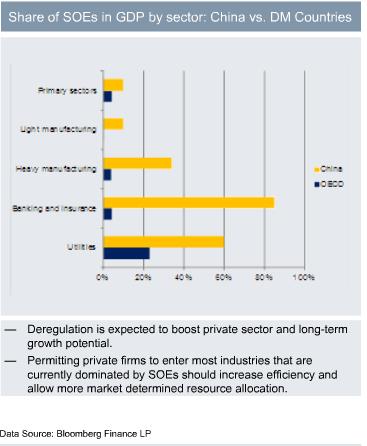 b. A crucial corollary to a) is the stark predominance of government run banks in China;
b. A crucial corollary to a) is the stark predominance of government run banks in China;
i. Illustrating this predominance is the fact that, of 94.3 trillion Renminbi of total assets in the Chinese banking system in 2010 ($14.4 trillion equivalent) – almost 50% was controlled by the four government banks created during the 1980’s (to supplement the PBOC Central Bank.[18]
ii. That 50% does not include the significant assets controlled by three newer government owned banks.
iii. The graph above from 1a) confirms the magnitude of this government banking power on the line identified as “Banking and Insurance.”
c. As we know, the government’s “heavy hand” imposes itself upon the economy at will.
i. One widely known example of this was the mammoth state “Internet censorship” story from recent history, which (among other things) resulted in Google (GOOG) becoming anathema in China (because it wouldn’t bow to state controlled censorship).
d. As Motorola Mobility rolls out its newest, low-price point smartphone,[19] specifically designed for emerging markets (without any wireless provider subsidy) we have been reminded that it cannot be sold in China because it is a subsidiary of GOOG.
e. The Chinese government has tightly regulated who can and can’t produce, market, sell, or “own” in China.
i. These controls have included a prohibition against foreigners owning actual equity shares of Chinese companies (so called “A” shares)[20].
ii. Yes, you may currently own a fund that is identified as a China equity fund or ETF, but you have (in fact) owned a different “class” or type of security (including derivatives of stock).
2) CORPORATE ACCOUNTING REGULATION: I would never suggest that China is bereft of any corporate accounting standards. However, it is an established fact that the standards used by Chinese companies for financial statements do not bear sufficient rigor or resemblance to U.S. GAAP standards for me to have much confidence in the figures generated in their reports.
a. I approach such financial statements with the same caution and skepticism with which I approach U.S. financial statements such as those approved by Jamie Dimon or Bernie Madoff.
3) “THE CHINA STORY” GOT AHEAD OF ITSELF: As so often happens along Wall Street, the equity analysts, broker marketing departments, and countless opinion-shapers became way too bullish on China prior to 2013.
a. It became “a given” among too many of them that China economic growth of 7-9% each year was “baked in”.
b. As many world economies “cooled” in 2013, Chinese economic metrics did not meet expectations; as a result, equity prices suffered.
c. All of these “experts” neglected to keep “at front of mind” the dangers of an economy within which the government exerts a disproportionate influence.
4) FINANCIAL ILLIQUIDITY: “What!?!?” you gasp! “Financial illiquidity” in the country that is (in some ways) “most flush” with cash!!???? How can that be?”
a. The answer is painfully simple: “Government Control”.
b. We have already laid out how thoroughly the government controls the banking system.
i. However, within an economy as huge as that of China, with millions upon millions of companies, entrepreneurs, newly wealthy citizens and newly “wealthier” persons, and other economic players vying for the capital needed to grow a business, build a building, or purchase a car, etc., it was inevitable that countless “Shadow Banks” would crop up and fill the emerging need for capital much more efficiently than any government or government owned bank!
ii. As inflation moved beyond the government’s target, or growth came in areas the government wanted to de-emphasize, Beijing leaders felt the need to suddenly apply some “economic brakes”.
 c. This was when “SHIBOR” reared its ugly head. The “Shanghai Interbank Offered Rate” is the Chinese parallel to the “LIBOR” rate used for decades in the U.S. and Europe to set commonly used interest rate standards upon which all of the borrowing rates that impact our lives are cued.
c. This was when “SHIBOR” reared its ugly head. The “Shanghai Interbank Offered Rate” is the Chinese parallel to the “LIBOR” rate used for decades in the U.S. and Europe to set commonly used interest rate standards upon which all of the borrowing rates that impact our lives are cued.
d. The only way for the Chinese government to “taper”[21] the Shadow Bank lending that was heating up the economy was to firmly tighten the credit lines of the banks lending to those Shadow Banks. As that occurred, short-term rates zoomed upward at a dizzying pace and news reports led us to believe that, at best, a “credit freeze”, and at worst, a “illiquidity crisis” reminiscent of our own Lehman Brothers catastrophe, was imminent. Take a quick look at the Shibor rate charts below to capture a sense of the magnitude of this rate crisis.
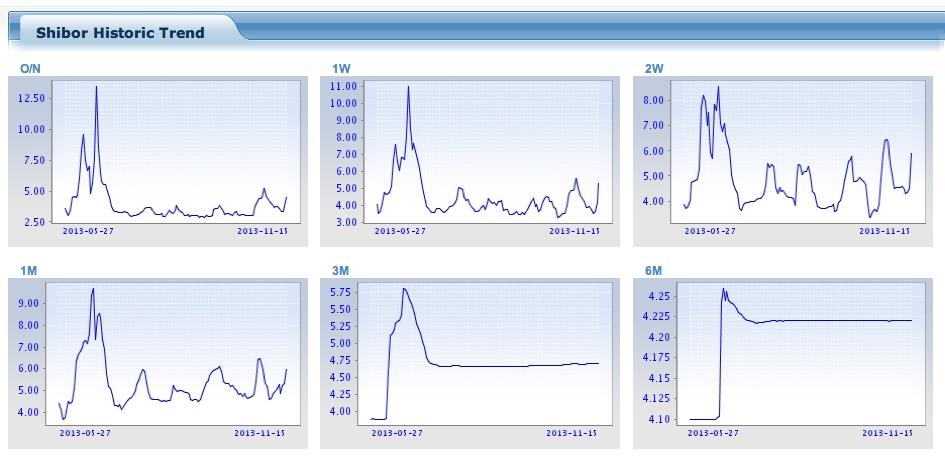
e. Does it surprise anyone that FXI tanked on those news reports… That was the price dip that appeared around mid-year.
![]() 5) SHANGHAI STOCK EXCHANGE SIZE/RELIABILITY: I have to word this section delicately. Most of us agree that the U.S. equity markets are (regularly) subject to manipulation. However, the massive size of (for example) the New York Stock Exchange (NYSE) and the vast number of trading entities actively involved within that market does make some of the worst types of “shenanigans”[22] less likely.
5) SHANGHAI STOCK EXCHANGE SIZE/RELIABILITY: I have to word this section delicately. Most of us agree that the U.S. equity markets are (regularly) subject to manipulation. However, the massive size of (for example) the New York Stock Exchange (NYSE) and the vast number of trading entities actively involved within that market does make some of the worst types of “shenanigans”[22] less likely.
a. Although the Shanghai Exchange is the world’s fifth largest (just slightly larger than the Hong Kong Exchange) – it is only 1/6 the size (in market cap) of the NYSE and (unlike the Hong Kong Exchange) has operated under strict capital controls.[23]
b. As a result, if I were in Las Vegas and forced[24]to bet which market (NYSE or Shanghai) was subject to a higher rate of “shenanigans”, I would lay heavy odds on the latter.
c. Anyone who traded Sina Corp. (SINA) or Baidu Inc. (BIDU) in what I call their “heyday” (2011… look at the related charts and trading volume) can attest to the impact (and sometimes, wild volatility) that news from China can have on the stock price of such issues.[25]
6) RELIABILITY OF CHINESE ECONOMIC NUMBERS/NEWS: This can be a sensitive issue. It is certainly complicated. However, I was struck by the diplomacy demonstrated by officers of a Chinese ETF during a major live presentation on China and the Shanghai Exchange.
An attendee asked (point blank): “Can the metrics reported by the Chinese government and Chinese companies be trusted?”
After a long pause, one of the vice presidents answered: “That’s a great question. I understand your concern, but we have confidence in the discernment and abilities of those we have working right there in the midst of China and its markets. We count on them to sort out those matters!”
I think that is the best, most fair way of describing the “reality” of China. I also suggest that this “reality” is closely tied to the historical evolution of the Western perception of China. It is my contention that only Westerners such as Marco Polo, who actually spend time in China, can really comprehend the Chinese people, culture, markets, and nation!
7) RELATED TO 1), 3) and 6) above are what have often been dubbed the “Ghost Cities” of China.
This is an area within which different commentators can build totally divergent stories.[26]
We have already highlighted the rapid pace of urbanization in China. A forward-looking government could be expected to plan efforts to facilitate that trend. Therefore, the fact that Beijing leaders have spent untold billions of Renminbi on the construction of ample urban centers could be considered by some as commendable. Here are some examples:
a) This is an aerial view of a vast new city (near the existing city of Lanzhou) called Lanzhou New Area. It boosts of impressive construction and even more impressive scale!
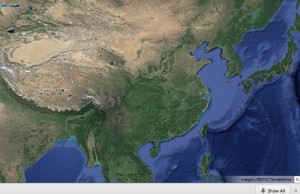 b) An additional feature of this new urban area is the fact that it is located in a less populated (and less economically endowed) region of China… the West. The Lanzhou New Area development is located just to the East (right) of the lake on the Chinese map appearing to the left.
b) An additional feature of this new urban area is the fact that it is located in a less populated (and less economically endowed) region of China… the West. The Lanzhou New Area development is located just to the East (right) of the lake on the Chinese map appearing to the left.
c) Even more impressive (perhaps) is the combination tourist, residential, and business city of Tianducheng that has been constructed from the ground up… complete with a French/Paris theme! (see an aerial image below).
One benefit I can see from this is that I could “kill two birds with one stone” – ie. see the sights of Paris and learn the culture and language of China in one (more economical) trip!
I encourage you to scroll to the end of this article to see some images of the “sights” in Tianducheng!
d) Alas, there is one significant criticism of the new Chinese cities – namely, they are largely empty. If you walk through them (or fly over them in a helicopter), you can’t see much traffic or find evidence of significant numbers of people!
Hence, we have the sobriquet of “Ghost Cities”.
You can defend them as forward-looking or decry and deride them as examples of phony, contrived economic activity.[27]
However, whatever you think of these cities, they are an integral part of the modern “conundrum” that is China!
Have you developed a clearer picture now of some of the challenges presented by China – challenges that complicate the economy of China and (to an even greater extent) complicate investing in China? When you combine the exciting “front story” of incredible Chinese growth with the “back story” that involves issues complicating the investment environment in China, you understand with new clarity the price action of FXI that we looked at earlier!
But there are new dynamics at work in China. Just take a look at the price action of the newest China ETF – the db X-trackers Harvest China ETF (ASHR). During the week of November 11-15th, it tracked the S&P 500 Index for two days, then collapsed before bursting upward within the course of three brief days – all because of a major announcement by the new government leadership in Beijing!
It is that news, and that ETF, that is the focus of Part II of this article. Keep your eye out for it, because it will help you make more sense of the “rest of the story” that is China!
INVESTOR TAKEAWAY: Years ago, I became caught up in the “China Story”. It sounded so compelling that I got myself heavily “on board” that story – investing significant sums in China and trading Chinese stocks on a daily basis.[28] Since those days (days that I now refer to as my “China Believer” years) my eyes have been “opened wide” regarding many of the dynamics that make investing in China problematic.
In light of all of this (as well as what I have tried to present above) allow me to offer you the following thoughts. You’ll have to be the judge regarding the wisdom (or lack thereof) of any of these points:
1) China stocks (and Chinese investing in general) is an area within the financial world that is particularly hazardous for investors! I often “put myself in the shoes” of other people and try to think as she/he might think. With that thought in mind, if I were a sales person (ie. broker) in a wire house firm, using stocks tied to the “China Story” as the subject of my next round of “cold calling” would be nearly irresistible.
Imagine that you were my client and I called you and shared with you all of the “positives” about the Chinese economy and its stocks. It would seem to be a pretty compelling case “to buy”, wouldn’t it?!
It would be even easier to “sell” the story of a new, start-up Chinese company – especially in the area of technology and/or the Internet!
However, you can breathe easily because that will never happen! As you now know (or I HOPE you now know!) investing in Chinese stocks is neither that one-sided nor that simple. To “sell” China like that would be an activity way too unethical for me to engage in!! SO BE CAREFUL INVESTING IN CHINA. Do so with your “eyes wide open!”
2) That being said, China will be a commanding economic force within the world for decades (if not centuries) to come! It is vital that we learn as much as possible about China – its people, its culture, its markets, etc.! And it will be advantageous for us to find optimal ways to invest in China! That will require more than casual attention to solid investment research/analysis. We will need to find knowledgeable, dependable, and trustworthy advisors who will provide us with balanced, well-vetted options within the Chinese equities “space”!
3) One solid option to consider is that of an ETF that includes analysts who know China best (natives, for example, instead of U.S. analysts who depend upon perceptions instead of detailed reality). A properly constructed Chinese Equity ETF will incorporate the diversification we need to manage risk and will be much more likely to reflect the upward trend in China that is so obvious by almost any measure!
The bottom line on this topic is that we should all take a page from the annals of history and remember that (as always) China presents us with a conundrum that is best deciphered through dependence upon those who are most directly knowledgeable about China and who combine that direct knowledge with demonstrated trustworthiness. That will insulate us from the vagaries, vicissitudes, and vulnerabilities to which we subject ourselves when we believe, carte blanche, the stories we read/hear about China through Wall Street, CNBC, or Bloomberg.
DISCLOSURE: The author currently owns FXI, ASHR, SINA, or BIDU. However, as hinted at earlier, he has traded heavily in SINA and BIDU in an “earlier life” and has owned FXI in the past. Nothing in this article is intended as a recommendation to buy or sell anything. Always consult with your financial advisor regarding changes in your portfolio – either subtractions or additions.
What follows are more images from Tianducheng… one of the new cities of China!
[2] Seminal influences included the conquests of Alexander the Great as well as the expansion and power of the Han Dynasty.
[3] When Polo returned from his 24-year journey to China and back, he became a victim of the political strife between Venice and Genoa. He dictated his (now famous) memoir while in jail. His recollections are variously referred to as “Il Milione,” “The Description of the World” or “The Travels of Marco Polo”. Those recollections became enormously popular throughout Europe, despite the fact that the printing press would not be invented until some two centuries later!
[4] Some of those perceptions were based upon facts; but many of them were based on myths, misunderstandings, fears, etc. The embarrassing truth is that the same holds true for “perceptions” about China and its people even today!
[5] Alas, this “Age of Discovery” also marked the beginning of a seminal period for Western colonialism.
[6] Source: the National Bureau of Statistics of China
[7] Not to mention London, Dublin, Paris, Berlin, Moscow, Canberra, Brasilia, etc.
[8] Source of chart: http://en.wikipedia.org/wiki/List_of_countries_by_foreign-exchange_reserves
[9] Data Source: People’s Bank of China.
[10] http://www.washingtonpost.com/blogs/worldviews/wp/2013/10/10/this-surprising-chart-shows-which-countries-own-the-most-u-s-debt/
[11] Source: usgovinfo.about.com
[12] An essential counter-balance to China’s very strong export economy.
[13] The source of these graphs: Deutsche Bank and the World Development Institute, at December 31, 2011.
[14] Source is WorldBank.
[15] Companies such as Apple (AAPL), Microsoft (MSFT), Qualcomm (QCOM), Yum Brands (YUM), McDonalds (MCD), Tesla (TSLA), etc.
[16] Most experts put the “actual” unemployment figure as high as 16%, if one counts those who have lost hope of employment and dropped out of the workforce.
[17] With its invariably ill-performing 5-Year and 10-Year “Plans”.
[18] It is worth noting that the U.S. banking system in 2010 was $1.1 trillion smaller than the Chinese system.
[19] The Moto G
[20] Not to be confused in any respect with the “A”, “B”, “C” share structure of many mutual funds in the U.S., etc.
[21] OK, I confess, “taper” is my adverb to describe what leaders in Beijing wanted to accomplish – ie. “taper” the excessive lending of Shadow Banks.
[22] “Shenanigans” is a technical market term regularly used by Coach John Marsland as a compelling reason to close out credit option trades before expiration in order to avoid any ill effects from the “shenanigans” that so often befall the market on expiration day.
[23] Controls regulated by Beijing, of course!.
[24] At gun point, of course.
[25] At least half of my daily trading in those days was in SINA and BIDU, until I tired of being buffeted by the seemingly manipulated news and events being reported from China.
[26] Of course, this has been true of China for centuries. Even early explorers brought back contrasting stories regarding their experience in China!
[27] Or just raise your shoulders up, display a puzzled look, and say “Huh??”
[28] One particularly galling “learning experience” came when I invested a significant sum in a Chinese coal company that the government had chosen as a key part of its coal consolidation policy (based upon advice from an analyst who was a Chinese citizen). Alas, the government “changed its mind” and the value of my investment went (as they say) “way south”. So much for “government planning”!
Related Posts
Also on Market Tamer…
Follow Us on Facebook

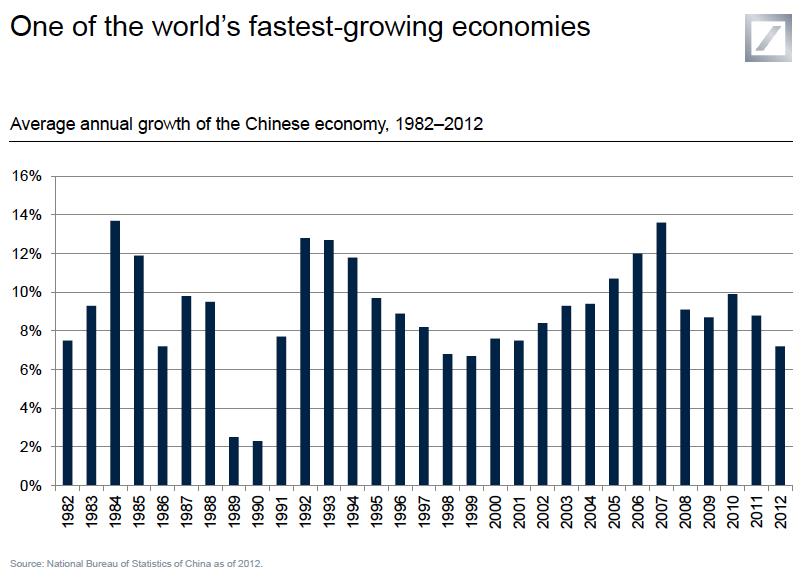
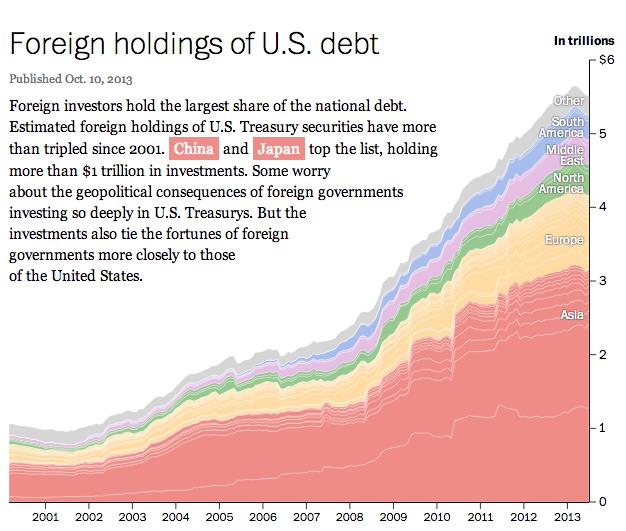
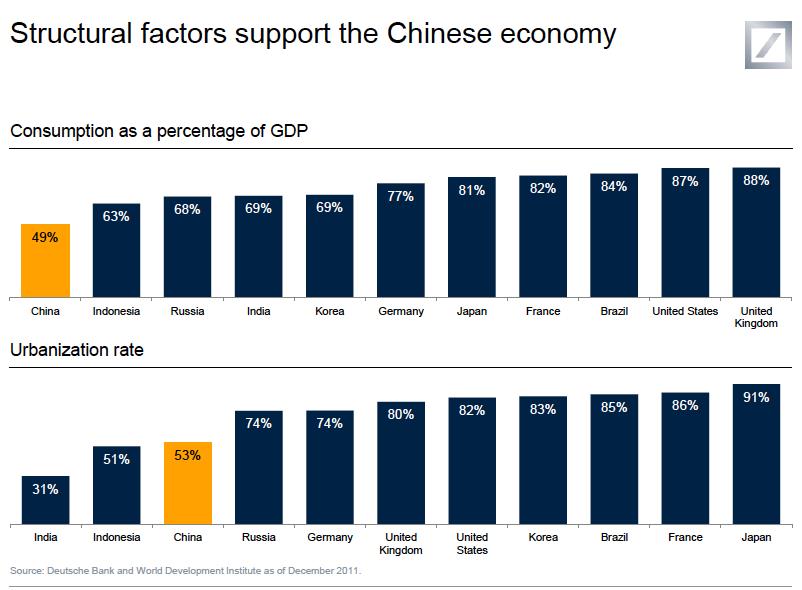
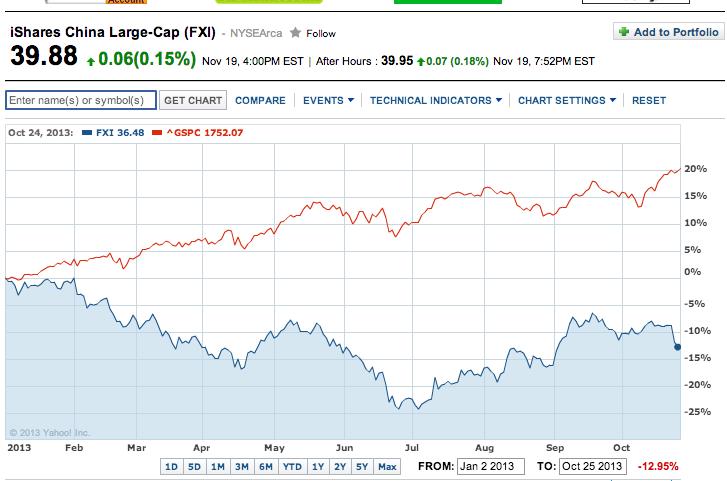
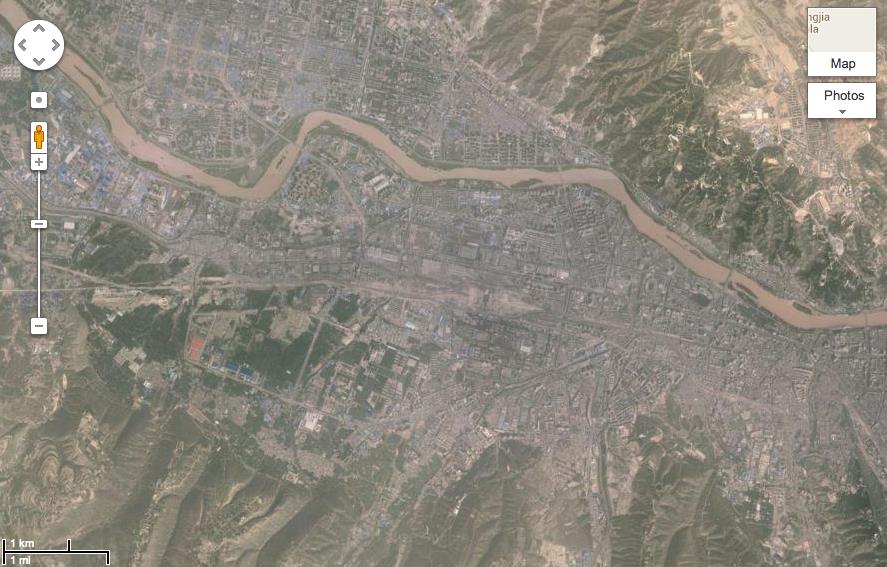
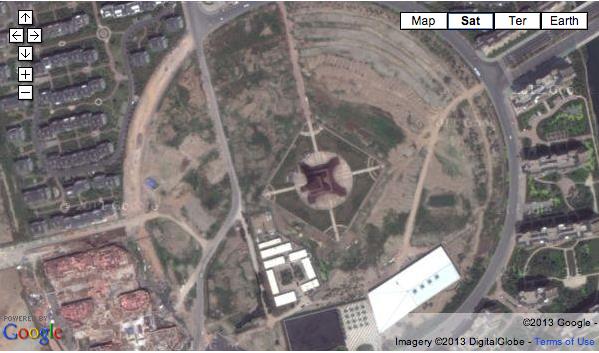
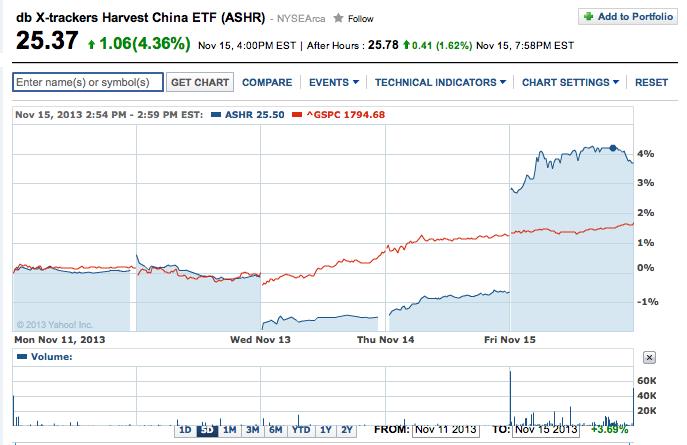


 BlackBerry Stock Has Skyrocketed Nearly 100% in 6 Months: Is It Too Late to Buy?
BlackBerry Stock Has Skyrocketed Nearly 100% in 6 Months: Is It Too Late to Buy?
